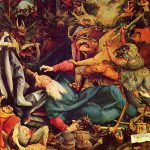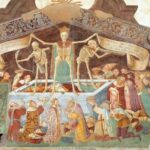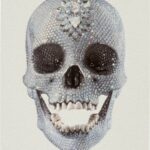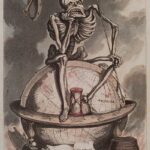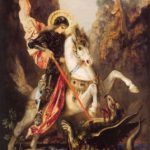According to Gaston Paris (Romania, xxiv., 131; 1895), Macabre is a French word that makes its first known appearance in the fourteenth century, in a fragmented poem by Jean le Fèvre’s Respit de la mort (1376) “Je lis de Macabre la danse”. The term is supposed by some sources to have developed from Maccabee, the name of the Christian martyrs who by tradition invented the prayer of intercession for the dead in Purgatory.
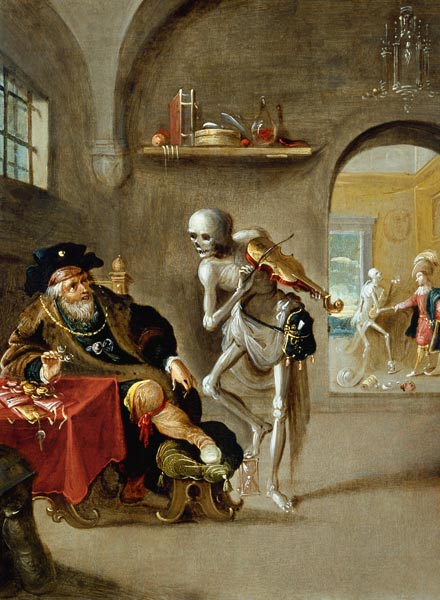
Other connections have been suggested, as for example with St Macarius, or Macaire, the hermit, who, according to Vasari, is to be identified with the figure pointing to the decaying corpses in the Pisan Triumph of Death, or with an Arabic word magbarah, cemetery. The word is also used in French, la danse macabre (English, Dance of Death, and German, Totentanz).
In painting or other art, it describes allegorically the interaction of the dead, or death, with the living. It is more widely applied to a type of artistic or literary works, characterized by a grim or ghastly atmosphere. In these works, there is an emphasis on the details and symbols of death.


